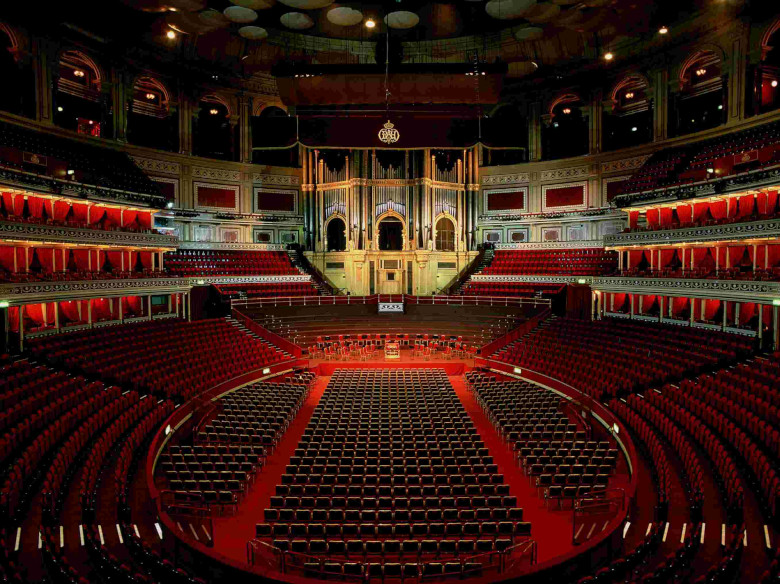
The Royal Albert Hall is London's premier venue for a wide range of events: symphonic music (The Proms season), organ and choral performances, large meetings, rock concerts, sports events and more. Because of its large size and its quasi-ellipsoidal (dome) shape, it has suffered from several acoustic problems from the day it was opened. These problems include a not very strong sound for symphonic music, late echoes and a very non-uniform acoustic character over the audience areas. Since 1996 major refurbishment work took place. Part of this operation was to improve the acoustic quality.
For this purpose, a 1:12 scale model was built in the Peutz acoustic laboratory, where extensive studies were carried out to acquire a detailed understanding of the causes of the hall's acoustic problems and to propose measures for improvement. In these studies, over 60 variations of the hall's interior were assessed, including an acoustically reflecting and diffusing convex velarium and a number of arrangements of scattering and diffusely reflecting free hanging elements in the transition area between the lower auditorium and the dome. The latter solution turned out to be optimal. An array was proposed, more condensed and more central in the space than the array designed by Shearer in the late 60s, which resulted in a significant improvement. Other design work, applying Computational Fluid Dynamic calculations, was carried out for the new ventilation system, which combines the mechanical supply of conditioned air with a natural air extract system, based on the stack effect. Wind tunnel tests gave information about the air pressures near the natural ventilation exhausts. Air supply was fully integrated in the steps of the stall areas and optimised for air flow and acoustic performance in the Peutz laboratories.